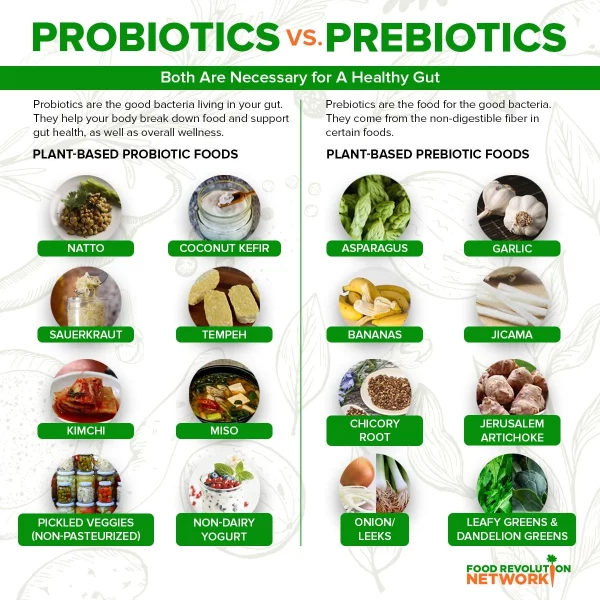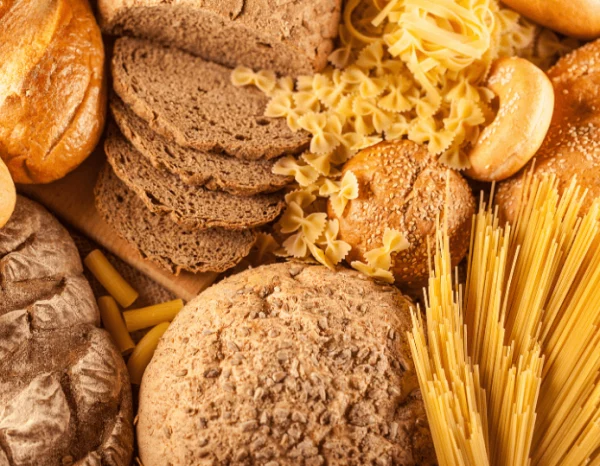Leaky gut syndrome, also known as “leaky gut syndrome,” is increasingly becoming a concern for many people. This is a condition where the cells in the intestinal wall no longer remain tightly connected, allowing toxins, bacteria, and undigested food particles to pass through the intestinal wall into the bloodstream, causing inflammatory reactions in the body. Studies have shown that this syndrome can be related to many health issues, including autoimmune diseases, infections, and digestive disorders.
According to Dr. Mark Hyman, a well-known expert in the field of nutrition, “leaky gut syndrome is one of the root causes of many health problems that many people are facing without even realizing it.” Typical signs of this syndrome include abdominal pain, bloating, diarrhea or constipation, prolonged fatigue, and autoimmune symptoms such as arthritis or skin problems.
“Adding probiotic-rich foods to the diet not only helps improve gut health but also supports the reduction of inflammation,” – Dr. James Smith, nutrition expert at Stanford Medical School.
A diet suitable for leaky gut syndrome should focus on reducing inflammation, restoring the function of the intestinal wall, and balancing the gut microbiome. Experts recommend using probiotic-rich foods such as yogurt, kimchi, and sauerkraut to supplement beneficial bacteria for the gut. Probiotics help balance bacteria, improve immune function, and prevent the leakage of inflammatory-causing molecules.
In addition, fiber-rich foods from vegetables, whole grains, and legumes are also essential for supporting gut health. Fiber helps maintain bowel movement and creates a favorable environment for the growth of beneficial bacteria. A study published in the Journal of Clinical Gastroenterology in 2020 found that a high-fiber diet can reduce the risk of developing leaky gut syndrome by 30%.

However, not all foods are beneficial for people with leaky gut syndrome. Experts warn that some foods can make the condition worse. Foods containing gluten such as bread, pasta, and processed foods can cause inflammation and damage the intestinal cells. Additionally, foods containing refined sugar such as sweets, sodas, and fried foods can trigger inflammatory responses in the body. According to a study conducted at the National Institutes of Health (NIH), removing gluten from the diet helped reduce symptoms of leaky gut syndrome in more than 60% of patients participating in the study.
According to Dr. David Perlmutter, a renowned neurologist, “eliminating gluten and inflammatory foods from the diet is one of the crucial steps in restoring gut function and reducing symptoms of leaky gut syndrome.”
Additionally, processed foods containing preservatives or additives are also discouraged. These substances can increase intestinal permeability and promote inflammatory reactions in the body. It is important for patients to choose fresh, whole foods and naturally prepared meals to ensure health safety.

To improve the condition of leaky gut syndrome, experts recommend a healthy diet that includes easy-to-make dishes suitable for gut health. A simple meal plan might include: oatmeal with fresh fruit for breakfast, a fresh vegetable salad with grilled chicken for lunch, and salmon with leafy greens for dinner. Additionally, it is important to drink enough water each day to support digestion and maintain electrolyte balance in the body.
Some special diets are also recommended for people with leaky gut syndrome, such as the GAPS (Gut and Psychology Syndrome) diet, the Paleo diet, or the low FODMAP diet. These diets help eliminate foods that may cause inflammation and provide the necessary nutrients for the gut to recover and maintain healthy function.
“The GAPS diet is a great solution to reduce inflammation in the body and repair gut damage,” shared Dr. Natasha Campbell-McBride, the founder of this treatment method. Implementing this diet can help many patients minimize symptoms and restore digestive health.
“A proper diet can significantly reduce symptoms of leaky gut syndrome and support the recovery process,” according to Dr. Sarah Jenkins, expert in nutrition and gut pathology at the United States Nutrition Research Institute.
With the latest scientific information about diet and research related to leaky gut syndrome, patients can easily choose a suitable treatment method. Remember that diet not only helps reduce symptoms but also plays an essential role in maintaining overall health for the body


HPX24h > Healthy Eating > The optimal diet for leaky gut syndrome: Scientific solutions and practical advice
Top Reads from This Category
Healthy Eating
Why Is Nutrition Research So Complex?
Healthy Eating
Health is ‘Declining’ Due to Processed Foods: How to Turn the Tide
Healthy Eating
Types of Fats: Can Fats Be Good for You?
Healthy Eating
Robert F. Kennedy Jr.: “We Are Being Poisoned Without Knowing It”
Healthy Eating
How Many Calories Do You Need Each Day to Maintain Optimal Health?
Healthy Eating
Vegan Keto Diet: Everything You Need To Know
Healthy Eating
MIND Diet – The Secret to Protecting the Brain and Preventing Cognitive Decline
Discover New Topics
Parenting Tips
How to Talk to Children About Alcohol (Ages 6-8)
Science
New Hope for the Blind: A Breakthrough in Retinal Implant Technology
Fitness
Rest the Right Way: When to Take a Rest Day and How to Spend It?
Science
Innate Intelligence: What Role Do Genetics Play in Developing High IQ
Fitness
Postpartum Fitness: Secrets to Maintaining an Active Routine for a Quick Recovery
Health
Chemicals in Cosmetics That Could Increase Breast Cancer Risk – Did You Know?
Animals
Rats Help Each Other: When Compassion Emerges from Small Creatures
Science
Robot Walker: A Breakthrough in Helping Stroke Survivors Regain Natural Walking
Animals
Secrets to Surviving Antarctic Freezing Cold Through RNA Editing
Healthy Eating
How to Follow the 5:2 Diet: The Key to Effective Weight Management
Science
The Secret of the Bee Brain: New Technology Enables Drones to Fly Independently
Health
5 Tips to Help You Overcome Smartphone Addiction
Science
Turning Dreams On and Off with Brain-Control Technology: A Breakthrough in Sleep Researc